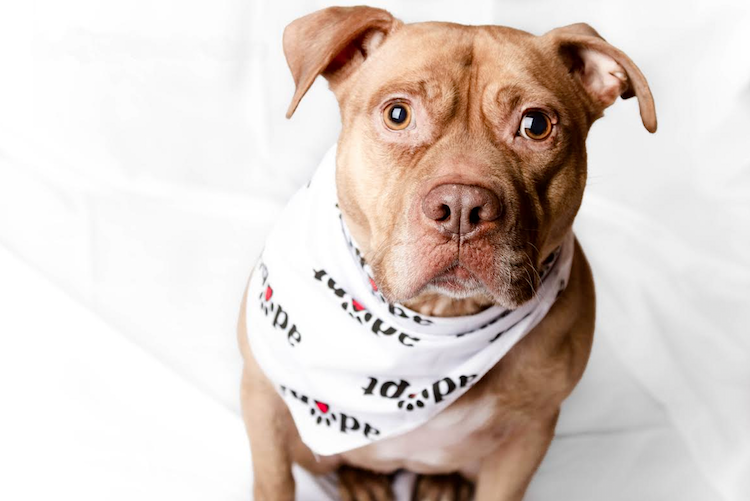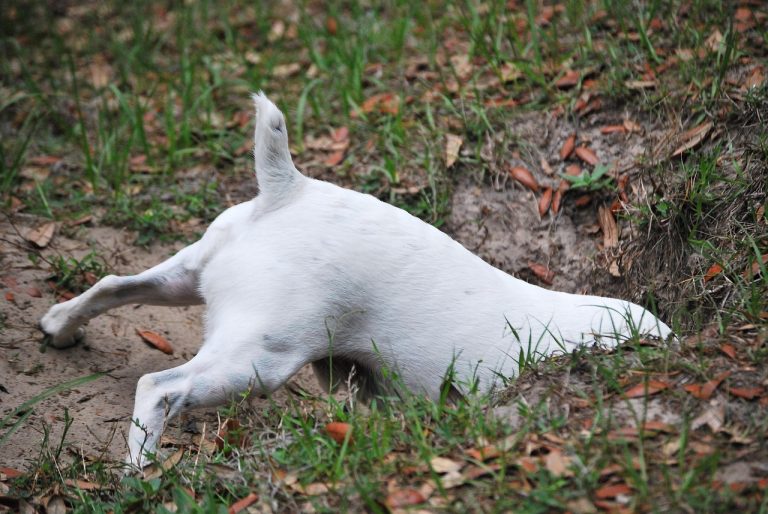Managing Anxiety in Dogs: A Guide to Help Your Pet Cope
Learn effective strategies for managing anxiety in dogs, from behavioral techniques to medication, to help your furry friend feel safe and secure.

- Recognizing Severe Anxiety in Dogs
- From Nervousness to Severe Anxiety in Dogs
- Strategies for Managing Anxiety in Dogs
- An Understanding of Anxiety in Dogs
- Understanding the Root Causes of Anxiety in Dogs
- Behavioral Interventions for Anxious Dogs
- Environmental Modifications to Reduce Stress in Dogs
- Long-Term Strategies for Supporting Anxious Dogs
- Frequently Asked Questions (FAQ)
- References

Don’t leave your pet’s safety to chance
Sign up for Petful recall alerts today.

Recognizing Severe Anxiety in Dogs
One warm August day, my husband and I noticed that Babe’s anxiety had escalated beyond typical levels. During a frightening incident involving a smoke alarm, Babe tried to escape through a window screen. This behavior made it clear that her anxiety in dogs had reached a critical point.
- Babe’s anxiety in dogs led her to try escaping through the window during a smoke alarm incident.
- This reaction highlighted the need for immediate preventive measures and a deeper understanding of her condition.
Realizing the severity of the situation, we knew we needed to address her anxiety in dogs promptly. This experience taught us the importance of recognizing and managing extreme anxiety in pets.
From Nervousness to Severe Anxiety in Dogs
Babe was initially a stray dog we fostered temporarily until we could find a permanent home for her. However, she quickly became a part of our family, turning our one-dog household into a three-dog home.
Babe’s anxiety in dogs began as separation anxiety, a common issue in stray or rescued dogs. She followed us everywhere and became destructive when left alone. She developed fears of everyday objects like the fly swatter and reacted severely to thunderstorms and fireworks. Her anxiety led her to try escaping through the window during a smoke alarm incident.
- Separation Anxiety: Babe’s anxiety in dogs escalated from mild nervousness to severe anxiety.
- Unpredictable Behavior: She displayed erratic behavior, including escaping and showing aggression.
As time went on, Babe’s anxiety in dogs intensified. This progression highlighted the importance of addressing her anxiety promptly. We also had her microchipped for her safety.

Strategies for Managing Anxiety in Dogs
We explored various options to help Babe with her anxiety in dogs. Here are three approaches we tried:
- ThunderShirt: The ThunderShirt applies gentle pressure, similar to swaddling, which can help calm dogs during stressful situations. However, it had limited effectiveness for Babe during thunderstorms.
- Composure Chews: These chews contain proteins and acids to naturally calm pets. Despite including them in Babe’s diet, they did not significantly alleviate her anxiety.
- Positive Reinforcement: We used simulated thunder sounds and rewarded calm behavior with treats. Unfortunately, this method also proved ineffective, as Babe could not be comforted during distress.
The Tipping Point
Our situation reached a critical point when Babe began waking us up in the middle of the night, displaying signs of severe anxiety in dogs. We realized that professional intervention was necessary, leading us to consult our veterinarian for further assistance.

An Understanding of Anxiety in Dogs
Babe was prescribed fluoxetine (Prozac) to help manage her anxiety in dogs. While the medication eased her daily stress, it wasn’t a complete solution. We needed to address the triggers of her anxiety and accepted that Babe would likely always have some level of anxiety.
During this period, we:
- Took turns snuggling with her at night until she fell asleep.
- Let her sit behind me while I worked, occasionally curling up in my lap.
- Avoided leaving the house more than once a day to minimize her time in the crate.
- Fed her all meals in her crate to create positive associations.
- Gave her peanut butter-filled Kong toys to keep her occupied when we left.
- Invested in a heavy-duty kennel to prevent destructive behavior.
Over time, the medication began to show effects, with Babe becoming less anxious and more relaxed around us and others. However, her fear and anxiety in dogs were still present, particularly in triggering situations. It became crucial for us to manage these episodes and continue supporting her.
Finding the Right Mix
To manage Babe’s extreme anxiety in dogs, we utilized a combination of tools and strategies:
- Heavy-duty crate
- Kong toys
- Medication
- Vet visits
Ultimately, the most important change was in our own approach, providing consistent support and care to help Babe feel secure.

Understanding the Root Causes of Anxiety in Dogs
Anxiety in dogs can arise from various factors, including genetics, past trauma, and environmental influences. Some breeds are more prone to anxiety due to their genetic makeup, while rescue dogs may experience heightened anxiety due to previous neglect or abuse. Recognizing these root causes is essential for effective management.
- Genetics: Certain breeds are more susceptible to anxiety in dogs due to their genetic predisposition.
- Past Trauma: Dogs that have experienced neglect or abuse may develop anxiety as a response to their past experiences.
- Environmental Factors: Changes in the environment, such as moving homes or the introduction of new pets, can trigger anxiety in dogs.
Understanding these factors helps pet owners identify the best approaches to alleviate their dog’s anxiety.
Behavioral Interventions for Anxious Dogs
Implementing behavioral interventions is crucial in managing anxiety in dogs. Techniques such as positive reinforcement, desensitization, and counter-conditioning can effectively reduce anxiety levels.
- Positive Reinforcement: Rewarding calm behavior helps reinforce positive associations and reduce anxiety.
- Desensitization: Gradually exposing dogs to anxiety-inducing triggers in a controlled manner can help lessen their fear response.
- Counter-Conditioning: Pairing anxiety triggers with positive experiences can help change a dog’s emotional response to those triggers.
Consistency and patience are key in applying these techniques to help anxious dogs feel more secure and confident.

Environmental Modifications to Reduce Stress in Dogs
Creating a calm and safe environment can significantly reduce anxiety in dogs. Simple changes in the dog’s surroundings can make a big difference in their overall well-being.
- Safe Spaces: Providing a designated safe space, such as a cozy corner or crate, can give dogs a place to retreat when feeling anxious.
- Routine: Maintaining a consistent routine for feeding, walks, and playtime helps reduce uncertainty and stress in dogs.
- Calming Aids: Using tools like white noise machines, calming scents, or anxiety wraps can help soothe anxious dogs.
These modifications can help create a stable and comforting environment, reducing overall stress levels.
Long-Term Strategies for Supporting Anxious Dogs
Long-term support is essential for managing anxiety in dogs. Ongoing strategies and consistent care can make a significant difference in their quality of life.
- Regular Vet Visits: Routine check-ups can help monitor the dog’s anxiety levels and adjust treatment plans as needed.
- Professional Training: Working with a professional dog trainer can provide tailored strategies to address specific anxiety issues.
- Holistic Approaches: Incorporating holistic methods such as massage therapy, acupuncture, or herbal supplements may benefit dogs with chronic anxiety.
These long-term strategies, combined with love and support, can help anxious dogs lead happier, healthier lives.
Frequently Asked Questions (FAQ)
How to treat separation anxiety in dogs?
Gradually increase the time the dog spends alone, using positive reinforcement and providing comfort items.
How to fix separation anxiety in dogs?
Consistently practice leaving and returning without fuss, and consider crate training or seeking professional help.
How to stop separation anxiety in dogs?
Establish a calm departure routine and use distractions like toys or treats to keep the dog occupied.
How to prevent separation anxiety in dogs?
Start by leaving the dog alone for short periods and gradually increase the time, ensuring a positive and calm environment.
References
- “Anxiety in Dogs.” Cummings School of Veterinary Medicine, Tufts University. https://vet.tufts.edu/news-events/news/anxiety-dogs
- “Treating Dog Anxiety: What You Need to Know.” American Kennel Club. https://www.akc.org/expert-advice/health/treating-dog-anxiety/
- “Anxious Behavior: How to Help Your Dog Cope with Unsettling Situations.” Cornell University College of Veterinary Medicine. https://www.vet.cornell.edu/departments-centers-and-institutes/riney-canine-health-center/canine-health-information/anxious-behavior-how-help-your-dog-cope-unsettling-situations







